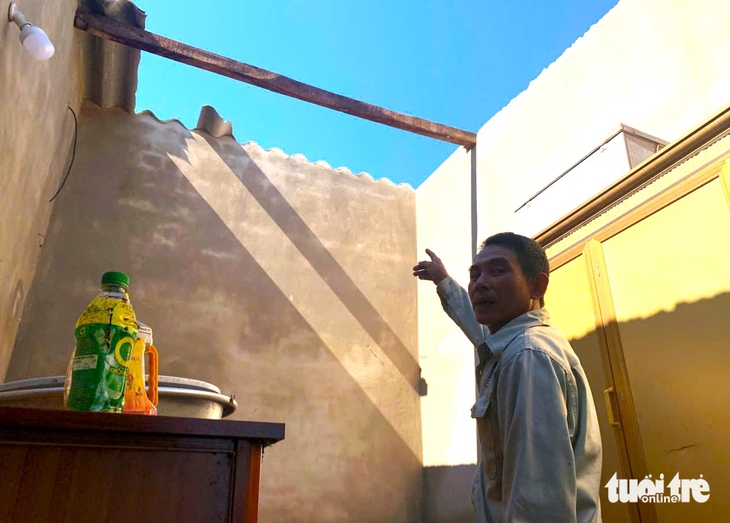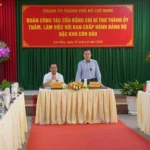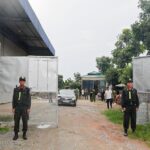In late September, Typhoon Bualoi caused significant damage in the Northern and Central regions… It is heartbreaking that disasters like flash floods and rapidly rising water levels due to heavy rain continue to recur.
Every year, I often travel to the Northern region for work during the “storm season,” so before going, I always pay attention to weather information. It can be said that current media provide quite timely warnings about the speed and severity of natural disasters, giving people more information for prevention.
However, in recent years, the consequences of natural disasters have become increasingly severe, with enormous losses of life and property.
In late September, Typhoon Bualoi caused significant damage in the Northern region… It is heartbreaking that disasters that have occurred before continue to happen, such as flash floods and rapidly rising water levels due to heavy rain…
Everyone knows that natural disasters cannot be completely avoided; many natural phenomena are beyond human control, especially as climate change becomes increasingly complex.
The question is how to minimize damage as much as possible, ensure people’s safety, and address the damage when natural disasters strike. One question that arises in my mind is: Why, with increasingly modern science and technology, and timely early warnings, are the consequences of natural disasters still unpredictable, and the loss of life and property still severe?
After recent storms, local authorities in many places responded quite quickly, cooperating with the people, mobilizing forces to address landslides, clear routes, and support the people. The state urgently allocated budgets to support affected provinces.
People in areas frequently affected by storms and floods face disasters year after year, so their material resources are limited. They lack the conditions to implement long-term self-protection measures like “building flood-resistant houses” and do not have reserves of food, drinking water, or medicine before storms and floods hit.
The evacuation of the elderly, children, or livestock is still largely spontaneous and therefore mostly ineffective. Thus, the intervention of authorities is truly necessary for the people in times of disaster.
There are proverbs like “when one sister falls, the other helps her up,” “the intact leaf wraps the torn leaf,” and even “the torn leaf wraps the tattered leaf,” reflecting the traditional morality of our people, emphasizing the spirit of sharing, mutual support, and helping each other in times of difficulty and disaster.
The timeless message of our nation is to live with affection and righteousness, knowing how to protect and care for one another. This is also the core of the spirit of national unity.
But the social context of these proverbs dates back hundreds of years, in a backward agricultural society with almost no timely warnings or notifications about natural disasters beyond some folk experiences.
Therefore, the approach mentioned above emphasizes reacting to situations that have already occurred, taking emergency relief and sharing actions when incidents are present. These behaviors reflect humane ethics but also show a common reactive mindset to “what’s done is done”: waiting for disaster to strike before helping each other.
In reality, after any natural disaster or accident, people from many places quickly volunteer to contribute food, clothing, money, and effort for relief.
The state, local authorities, the Fatherland Front, the Red Cross, social organizations, businesses… also quickly “join the effort” to organize emergency support, distribute relief resources, and help people rebuild their lives.
If “when one sister falls, the other helps her up” and “the intact leaf wraps the torn leaf” are reminders of compassion after disasters occur, then today’s lesson needs to add a new way of thinking: “The sister hasn’t fallen yet, the other is already lending a hand; the leaf isn’t torn yet, the intact leaf is already adding reinforcement.” This means transforming the spirit of mutual support into the responsibility of prevention, preparation, and early mutual protection to minimize the recurring scenes of “falling” and “tearing” every year.
This is precisely the responsibility of authorities at all levels in building and implementing better policies for preventing the risks of natural disasters and accidents; supporting sustainable livelihoods regarding sources of living and residence, not letting poor and vulnerable people live in disaster-prone areas without alternative plans.
This involves educating awareness about prevention, skills for responding to natural disasters, knowing how to evacuate, and knowing how to protect property before storms and floods arrive.
It is the spirit and action of early sharing: organizing rescue efforts,






